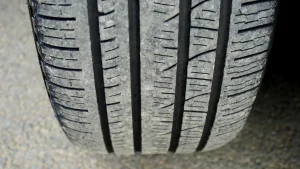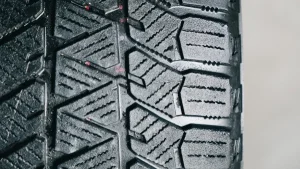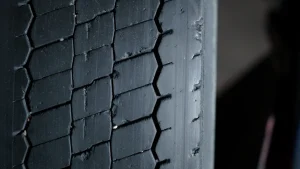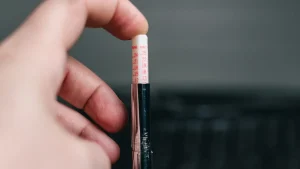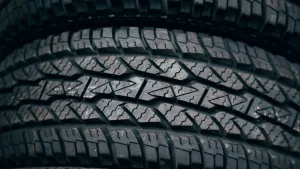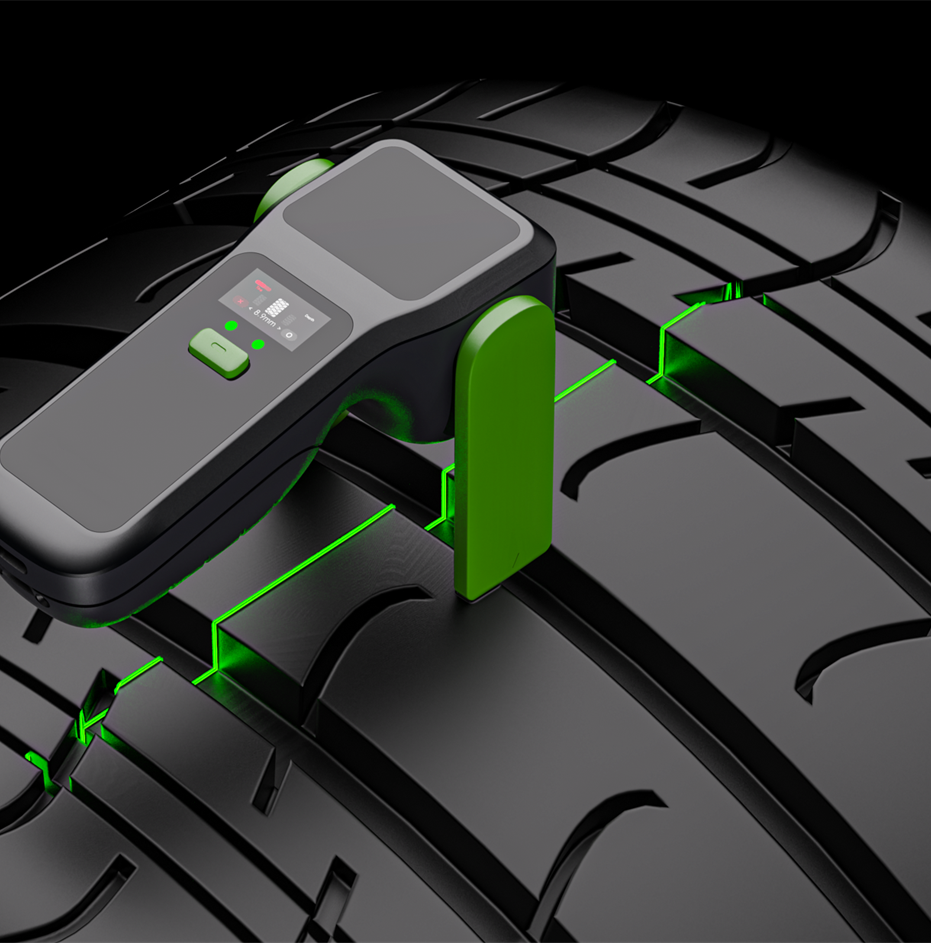
Checking your tire tread depth keeps you safe on the road. Proper tread gives you traction and effective braking, even when roads get wet or slippery. You can check tire tread in just a few minutes, and you do not need special skills—anyone can use a tire tread gauge or other simple tools. When you skip tread checks, you increase your risk of accidents, hydroplaning, and dangerous blowouts. In fact, 26.4% of crashes involve tires with less than 2/32 inch tread.
Tire Tread Depth Range (inches) | Percentage of Crashes Involved |
|---|---|
Less than 2/32 | 26.4% |
Between 3-4/32 and 7/32 | 8% |
Tread depth matters for your safety. Good tread channels water away and helps your car grip the road. If you want to stay in control, make it a habit to check tire tread often.
Key Takeaways
Checking your tire tread depth often helps keep you safe. It gives you better grip and helps you stop faster. This is very important on wet or slippery roads.
Worn tires make driving more risky. They make it harder to stop quickly. You can slide on water or even have a blowout. These problems can cause crashes or get you in trouble with the law.
Easy tests like the penny test or a tire tread gauge help you check your tires fast. These tests show if you need new tires soon.
Change your tires before they get too worn down. This helps you control your car better and keeps you out of danger.
Taking care of your tires, like checking them, rotating them, and keeping them filled right, helps them last longer. It also keeps your car safe to drive.
Tire Tread Basics
What Is Tire Tread
Tire tread is the part of your tire that touches the road. It has a pattern made up of ribs, grooves, blocks, and sipes. Each part plays a role in keeping you safe:
Ribs are the raised sections that help your tire make contact with the road and give you good traction.
Grooves are channels that run around the tire. They move water away from the surface, so your tire can keep its grip even when roads are wet.
Blocks and sipes add extra edges and flexibility. These features improve traction and handling in different driving conditions.
The tread pattern on your tire is not just for looks. It helps your car stay stable and responsive, especially when you face adverse conditions like rain, snow, or rough roads. Different tread designs work better for certain situations. For example, some patterns help prevent hydroplaning by pushing water away, while others give you more grip on snow or ice.
Tip: Regularly check your tire tread depth. This simple habit helps you spot problems early and keeps your tires working their best.
Why Tread Depth Matters
Tread depth importance cannot be overstated. When your tire has deep tread, it can channel water away more easily. This reduces the risk of hydroplaning and helps you keep control of your car. Deeper tread also means better traction, which is key for safe braking and handling.
New tires usually have a tread depth of 10/32″ to 11/32″. As the tread wears down, your tire loses its ability to grip the road.
Shallow tread makes it harder for your tire to move water, snow, or slush out of the way. This leads to longer stopping distances and less stability.
Special tread patterns and sipes add extra biting edges. These features help your tire grip the road in wet or snowy weather.
If you drive with worn tread, you face more danger in adverse conditions. Your car may skid or slide, especially when roads are slick. Good traction depends on having enough tread depth. By checking your tires often, you make sure they can handle all types of driving conditions and keep you safe.
Risks of Low Tire Tread Depth
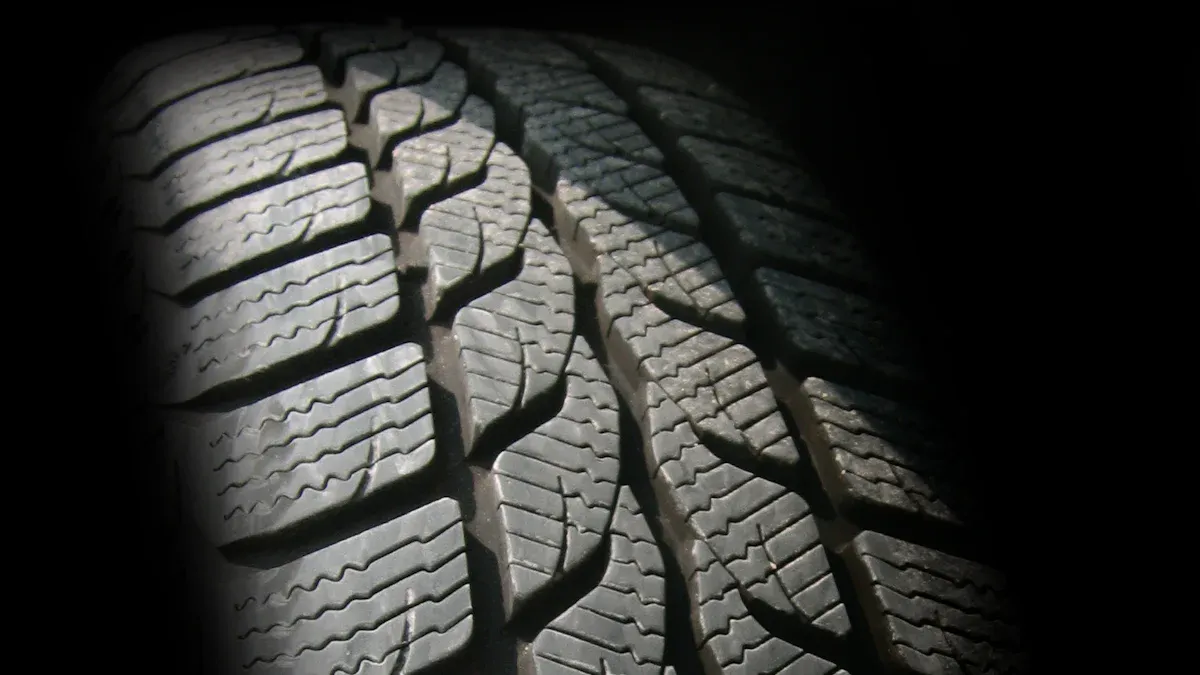
Image Source: pexels
Driving with low tread depth puts your safety on the road at serious risk. When your tires wear down, you lose control, face longer stopping distances, and increase your chances of accidents. Many states require a minimum tire tread depth of 2/32 of an inch. If you drive with less, you could face fines, failed inspections, and even denied insurance claims if an accident happens. Keeping your tires in good condition protects you, your passengers, and everyone else on the road.
Loss of Traction
Low tread depth means your tires cannot grip the road as well. You may notice your car sliding or skidding, especially when you make sharp turns or stop suddenly. This happens because worn tread cannot channel water away, so your tires lose contact with the road. You face a higher risk of losing control during rain, snow, or emergency maneuvers.
Tires with low tread depth have reduced grip, especially on wet or snowy roads.
Hydroplaning becomes more likely because shallow grooves cannot move water away fast enough.
Sudden moves, like quick turns or hard braking, can cause your car to skid or spin out.
Keeping proper tread depth helps your tires maintain traction and keeps you safer.
Note: Regular tread checks and timely tire replacement help you avoid these dangers and keep your car stable.
Longer Stopping Distance
Worn tires make it harder for your car to stop quickly. As tread depth decreases, your tires cannot push water away as well, so they lose contact with the road. This leads to much longer stopping distances, especially on wet pavement.
Tread Depth (inches/mm) | Stopping Distance (feet) | Braking Efficiency (%) |
|---|---|---|
11/32″ (12.1 mm) | 160 | 100 |
10/32″ (11.0 mm) | 162 | 98.8 |
7/32″ (7.7 mm) | 178 | ~90 |
5/32″ (5.5 mm) | 195 | 82.1 |
2/32″ (2.2 mm) | 250 | 64 |
1/32″ (1.1 mm) | 300 | 53.3 |
You can see from the table that stopping distance increases as tread wears down. At 2/32 inch, your car may need up to 90 feet more to stop than with new tires. This extra distance can mean the difference between a close call and a crash.

Tip: Always replace your tires before they reach the legal minimum. This helps you stop faster and avoid accidents, especially in wet weather.
Hydroplaning and Blowouts
Low tread depth makes your car much more likely to hydroplane, also called aquaplaning. When your tires cannot move water away, a layer of water builds up between the tire and the road. You lose steering and braking control, and your car can slide out of your lane.
Hydroplaning can happen at lower speeds when tires are worn.
Tires with low tread depth have an 8% decrease in hydroplaning resistance compared to new tires.
Blowouts are more common with worn tires, especially if they are under-inflated. Heat builds up, and the tire can burst without warning.
Thin tread also makes tires more likely to get punctured by sharp objects.
Accident studies show that tires with less than 5/32 inch tread lose much of their ability to channel water. This makes wet weather driving much more dangerous. The risk of blowouts also rises, which can cause you to lose control at high speeds. In fact, tires with 2/32 inch tread or less are three times more likely to cause crashes than those with more tread.
Alert: Many states enforce laws about minimum tread depth. If you drive with bald tires, you could get a ticket, fail inspection, or even have your insurance claim denied after an accident.
Driving with tires below the legal minimum can lead to fines and penalties.
Insurance companies may deny claims if bald tires contributed to a crash.
You may have to pay for repairs and legal fees out of pocket.
Neglecting tire tread checks can also cost you more money. Fines, higher insurance premiums, and frequent tire replacements add up fast. Keeping your tires in good shape saves you money and keeps you safe.
How to Check Tire Tread
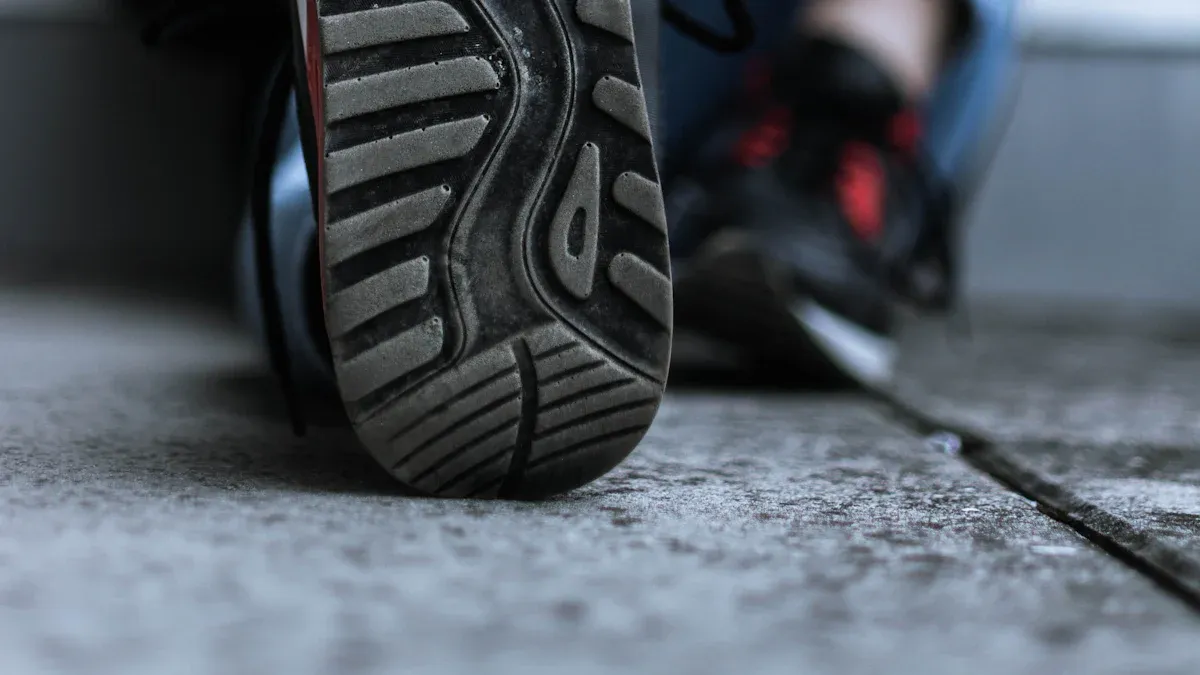
Image Source: pexels
Checking your tire tread is a simple task that helps you stay safe on the road. You do not need special skills or expensive equipment. You can use common items like a penny or a quarter, or you can use a tire tread gauge for more accurate results. Here are the most reliable ways to check your tread at home.
Penny Test
The penny test gives you a quick way to see if your tire tread is too low. You only need a penny and a few minutes.
Take a penny and hold it so Lincoln’s head is upside down and facing you.
Insert the penny into the tread groove of your tire.
Look at Lincoln’s head. If you can see all of it, your tread is less than 2/32 inch deep. This means your tire is worn out and you should replace it.
If part of Lincoln’s head is covered by the tread, your tire still has more than 2/32 inch of tread left.
Repeat this test in several spots around each tire. Tread can wear unevenly, so check the inside, outside, and center.
Tip: The penny test is fast and easy, but it does not give an exact measurement. It tells you if your tread is at or below the legal minimum. For a safer margin, you can use a quarter. If the tread touches Washington’s head, you have at least 4/32 inch left.
The penny and quarter tests help you spot tires that need attention. They work as a pass/fail check, but they do not show small differences in tread depth. If you want a more precise reading, you should use a tire tread gauge.
Tire Tread Gauge
A tire tread gauge gives you an exact measurement of your tread depth. This tool is small, affordable, and easy to use. You can find one at any auto parts store.
Follow these steps to measure tread depth with a tire tread gauge:
Press the tire tread gauge against a flat surface and push the measuring pin in to make sure it reads zero.
Place the gauge’s pin into the center of a main tread groove on your tire.
Push down until the base of the gauge sits flat on the tread.
Remove the gauge carefully and read the number on the scale. This shows your tread depth in 32nds of an inch.
Check at least three spots around each tire, spacing your measurements about 15 inches apart. Tread can wear unevenly.
Average your readings to get the most accurate result.
Compare your measurement to the tire’s original tread depth. Most new tires start at 10/32 to 11/32 inch.
Note: A tire tread gauge gives you a clear answer about how much tread you have left. It helps you decide when to replace your tires before they become unsafe.
Many tires also have tread wear indicator bars built into the grooves. When the tread becomes level with these bars, your tire has reached 2/32 inch and needs to be replaced. You can use these bars as a visual guide, but a tire tread gauge will always give you the most accurate result.
Method | What You Need | What It Tells You | Accuracy |
|---|---|---|---|
Penny Test | Penny | At/below 2/32 inch | Quick, not exact |
Quarter Test | Quarter | At/below 4/32 inch | Quick, not exact |
Tire Tread Gauge | Tread gauge tool | Exact tread depth in 32nds inch | Very accurate |
Indicator Bars | Visual check | At/below 2/32 inch | Visual only |
🚗 Safety Reminder: Always check your tires in several places. Uneven wear can signal problems with alignment or inflation. If you notice cracks, bulges, or noisy tires, have them checked by a professional.
By using these simple methods, you can measure tread depth and keep your tires in good shape. Regular checks help you avoid accidents and keep your car performing at its best.
Tire Tread Depth Limits
Legal Minimum
It is important to know the legal minimum tire tread depth where you live. In the United States, the law says your tire must have at least 2/32 inch (1.6 mm) of tread. Many other countries have similar rules. Some places need even more tread for certain seasons or types of vehicles. Here is a table that shows the legal minimums in different regions:
Region | Legal Minimum Tire Tread Depth |
|---|---|
United States | 2/32 inch (1.6 mm), with some states requiring more |
Canada | Generally 1.6 mm; Quebec requires 3.2 mm for winter tires |
European Union | 1.6 mm (varies slightly by country) |
Australia | 1.5 mm (off-road vehicles may require more) |
South America | 2/32 inch (1.6 mm) in Argentina and Brazil; others vary |
Asia | Japan: 1.6 mm; China: 2 mm; India: 1 mm |
Africa | South Africa: 1 mm; others vary widely |
Middle East | UAE and Saudi Arabia: 1.6 mm; others vary |
🚨 Note: Police and inspectors check tread depth during car inspections. If your tire does not meet the minimum, you might get a ticket or fail inspection.
Recommended Replacement
You should not wait until your tire is at the legal minimum before getting new tires. Safety experts say you start losing grip and braking power before you reach 2/32 inch. Many experts say to buy new tires when tread depth drops to 4/32 inch, especially if you drive in rain or snow. Deeper tread helps your tire move water, snow, and slush away from the road. This lowers the chance of hydroplaning and helps you stop faster.
Deeper tread moves water and snow, so you have better control.
Enough tread makes stopping easier in wet or icy weather.
Winter tires need more tread. Experts say to replace them at 6/32 inch for best grip in snow and ice.
If you want to stay safe, check your tires often and get new ones before you reach the minimum. This helps your car handle well and keeps you safe in bad weather. Remember, the right tread depth gives you better grip and braking, so do not wait too long to get new tires.
Tire Maintenance Tips
Regular Inspections
You should check your tires often to keep them in good shape. Regular checks help you find problems early. Look for things like cuts, cracks, or bulges on your tires. Use a tread depth gauge or the penny test to see if your tread is deep enough. If you notice uneven wear, your tires might need alignment or balancing.
Use tread wear indicators to see if your tires are too thin.
Make sure valve stems are not leaking.
Tip: Finding tire problems early can stop accidents and save you money. Checking your tires often also helps keep your car safe and working well.
Tire Rotation and Inflation
Rotating your tires and keeping them filled with air are important steps. These steps help your tread last longer and keep your tires working well. Tires wear out in different ways depending on where they are on your car. If you rotate them every 5,000 to 7,500 miles, they wear more evenly. This helps your car grip the road and stop better.
Rotate your tires as part of your regular car care.
Use a gauge to check tire pressure and keep it at the level your manual says.
Proper inflation makes your car use less fuel.
Tires that wear evenly last longer and handle better.
When you rotate and fill your tires, you lower the chance of blowouts and uneven wear. You also avoid paying for emergency repairs. Good habits like these make it easier to keep your tread deep and help your tires last longer.
Checking your tire tread depth keeps you safe and helps your car work well. Worn tires can make your car take almost 90 feet longer to stop. This can happen even before your tires reach the legal limit. You should look at your tires often and get new ones before they get too worn. Experts say to check your tires and rotate them on a regular schedule. This keeps you safer and your car running better. If you see your tread is low, get new tires right away. Taking a few minutes to check can help protect you and everyone else on the road.
FAQ
How often should you check your tire tread depth?
You should check your tire tread depth once a month. You should also check before long trips. Regular checks help you spot problems early and keep you safe on the road.
Can you drive safely with tires at the legal minimum tread depth?
You can drive, but it is not safe. Tires at the legal minimum lose grip, especially in rain or snow. Replace your tires before they reach 2/32 inch for better safety.
What causes uneven tire tread wear?
Uneven wear often comes from poor alignment, unbalanced tires, or low tire pressure. You should rotate your tires and check alignment to help your tires wear evenly.
Do all tires have tread wear indicator bars?
Most modern tires have tread wear indicator bars. These bars sit inside the grooves. When the tread wears down to the bars, it is time to replace your tires.

